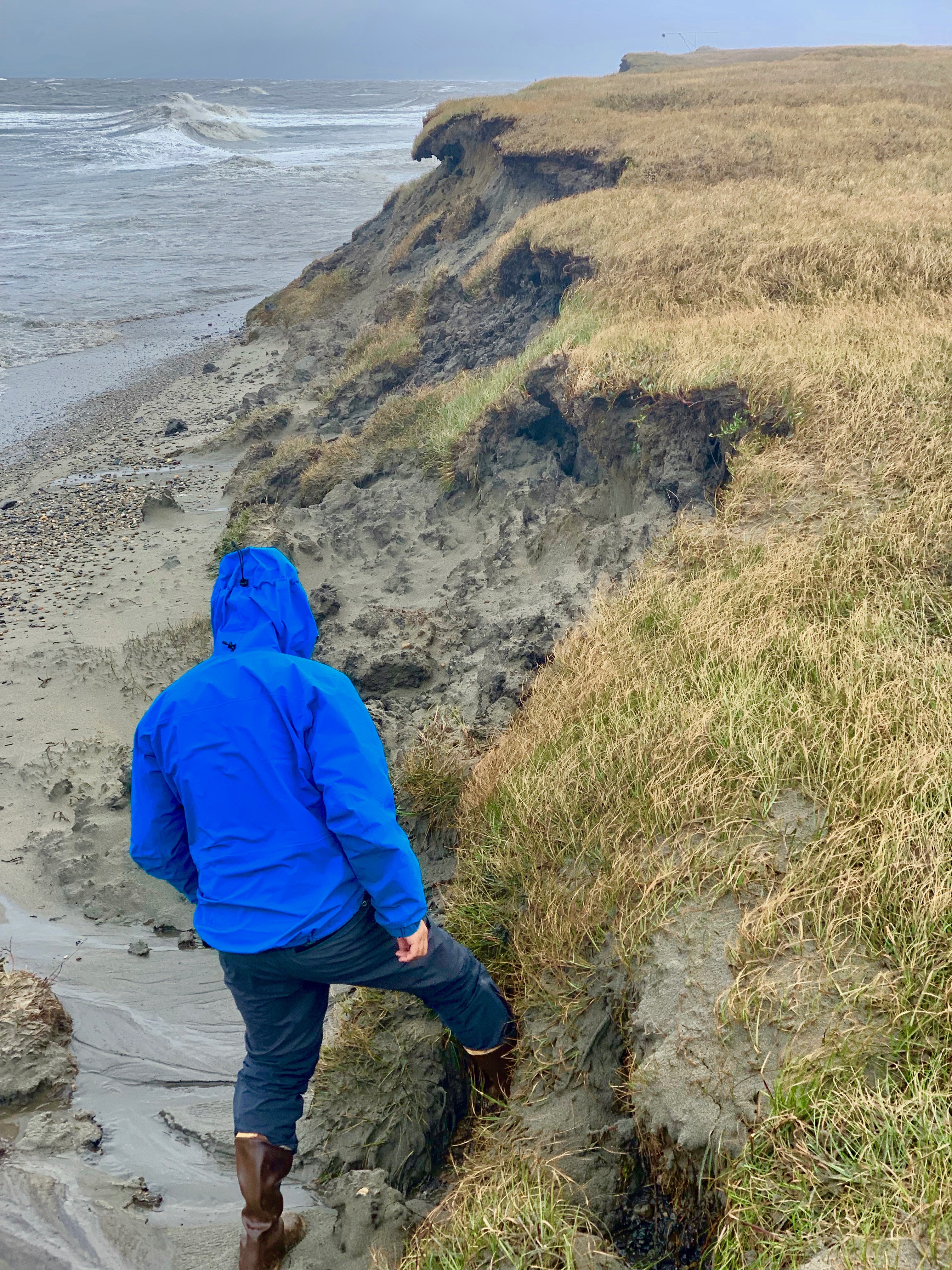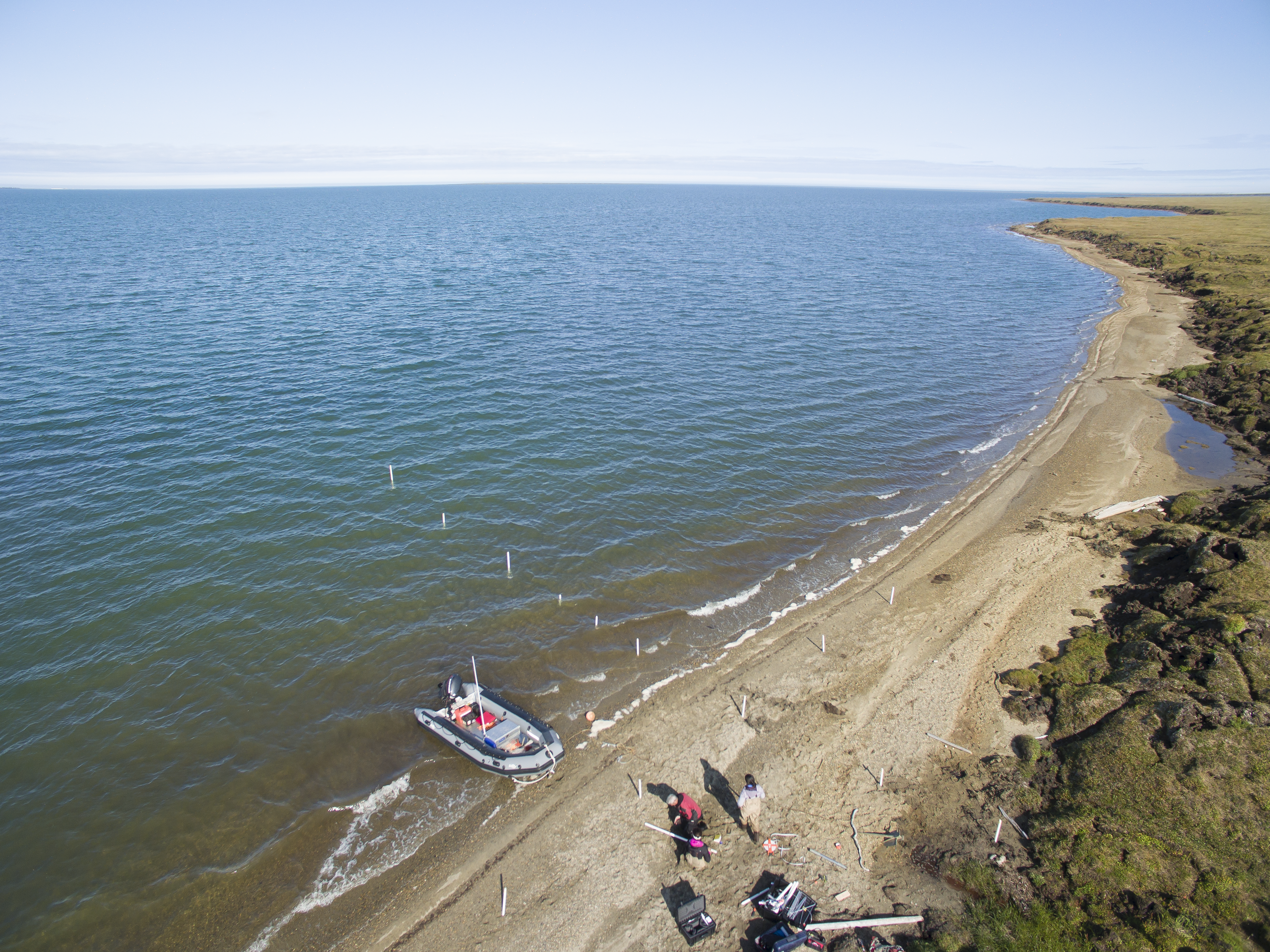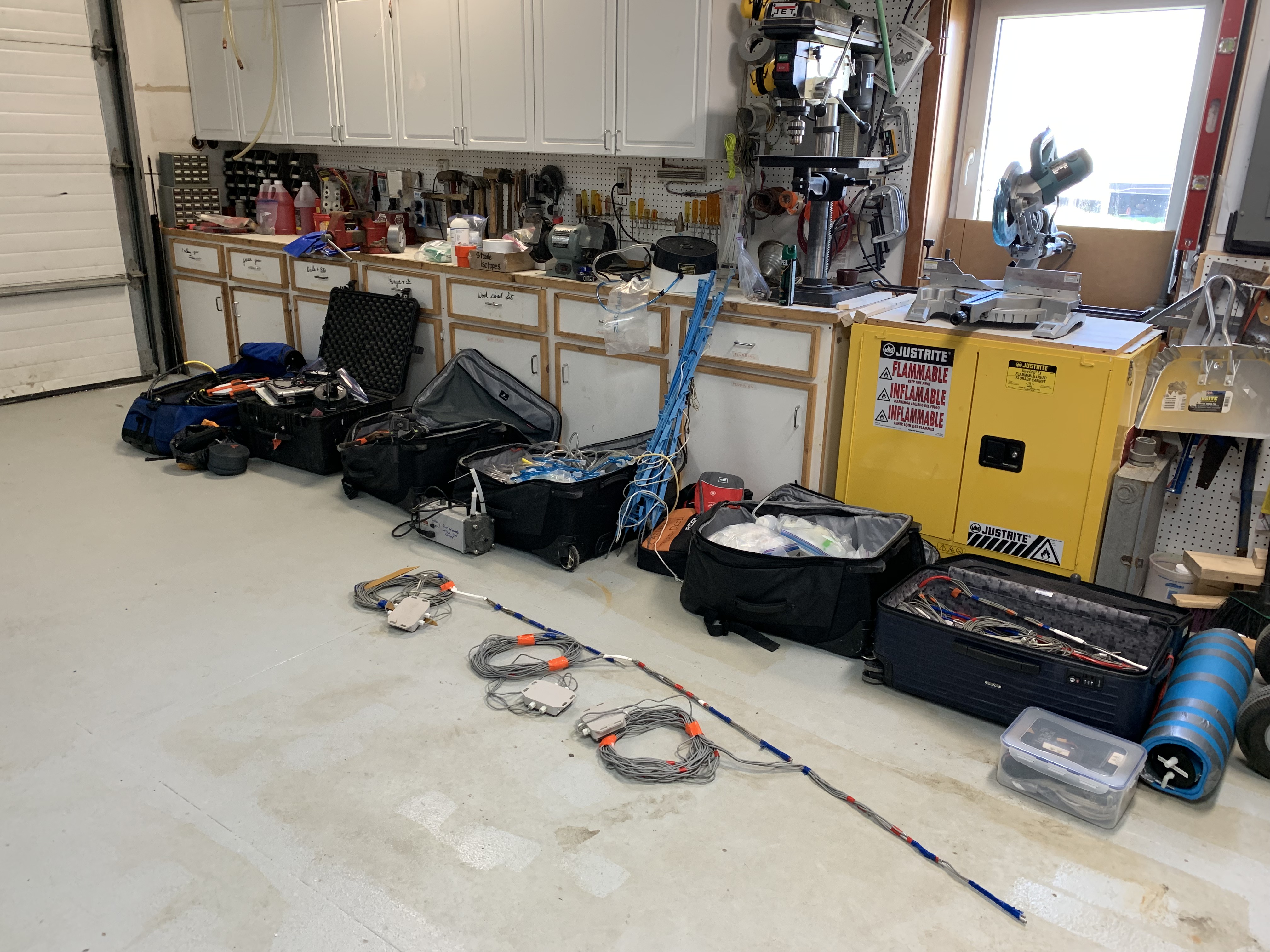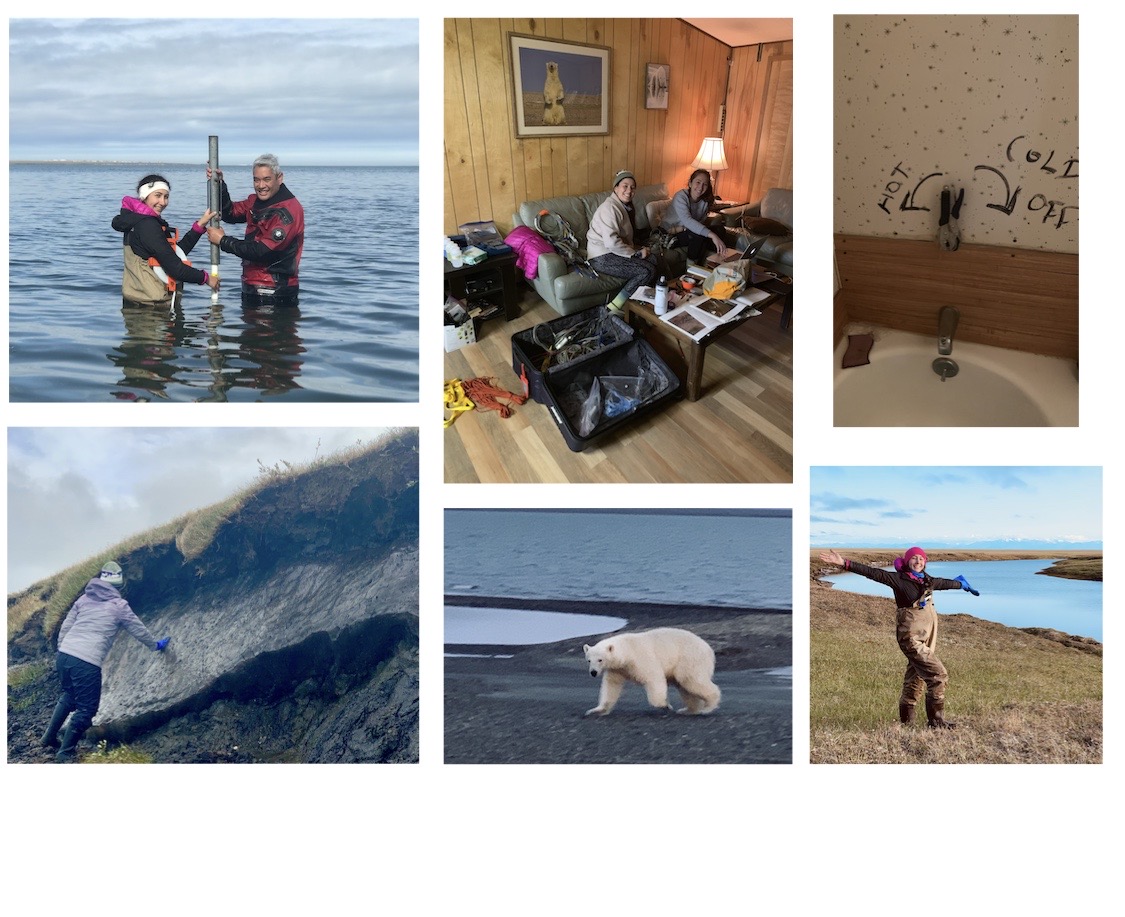
In August 2019, our research team visited Kaktovik Lagoon to conduct fieldwork with the goal of exploring coastal aquifers of the Arctic. This field campaign is special to me since it was the first time I have been to the Arctic and the first field campaign of my PhD project. We have stayed in an Iñupiat village, on the Barter Island located on the northern edge of the Arctic National Wildlife Refuge, in the North Slope of Alaska.
Why are we doing research here?
The goal of my research is to understand the occurrence and flow of groundwater in coastal permafrost regions. Groundwater hydrology in these unique and complex landscapes have been scarcely studied due the challenges in accessing remote field sites.
Permafrost is defined as the subsurface material that stays below 0 degC consecutively for at least 2 years. Based on the salt content of the porewater, permafrost can vary in ice content (can even be unfrozen, due to freezing point depression.) The #1 condition for groundwater flow to occur is to have a soil/sediment matrix that can transmit fluid flow. In the Arctic soils, flow can be present when ground is not fully frozen, meaning the pore spaces are available for fluid passage.
Groundwater is an important mechanism for the transfer of organic/inorganic matter and nutrients from land to coastal oceans. Therefore, its discharge can influence coastal biogeochemistry. This is particularly crucial in the Arctic, due to the high organic carbon (and other organic/inorganic matter, nutrients) content of the permafrost, which is in contact with groundwater.
Potential increase in groundwater discharge with thawing of permafrost due to the warming climate may result in coastal ecosystem changes.

The pictures above and below depict the on-going coastal degradation at the Barter Island (taken in August, 2019).

We observed the groundwater discharge seeping out of a shallow bluff edge on the Northern coast of Barter Island (picture below).

Study Area
We took a boat to our field site located on the southern part of the lagoon. It took us about 15 minutes to get there. Almost every night, on our way back to the island from our field site, polar bears greeted us on land and sometimes scared us in the water :)

The Team and Kaktovik
Our team rocks!
Left to right: Me, Prof. Bayani Cardenas (PI, PhD supervisor, UT Austin), Micaela Pedrazas (Master’s student, UT Austin), Prof. James McClelland (PI, UT Marine Sciences) (not in the picture).

Equipment
We brought 6 big luggage with us (!). Each were minimum of 50 lbs, carrying a wide range of equipment including piezometers, post drivers, sampling kits, pressure sensors, thermistors, chemistry items, coring equipments and a ton of colorful electric tapes :)

Field measurements
Coming soon …


